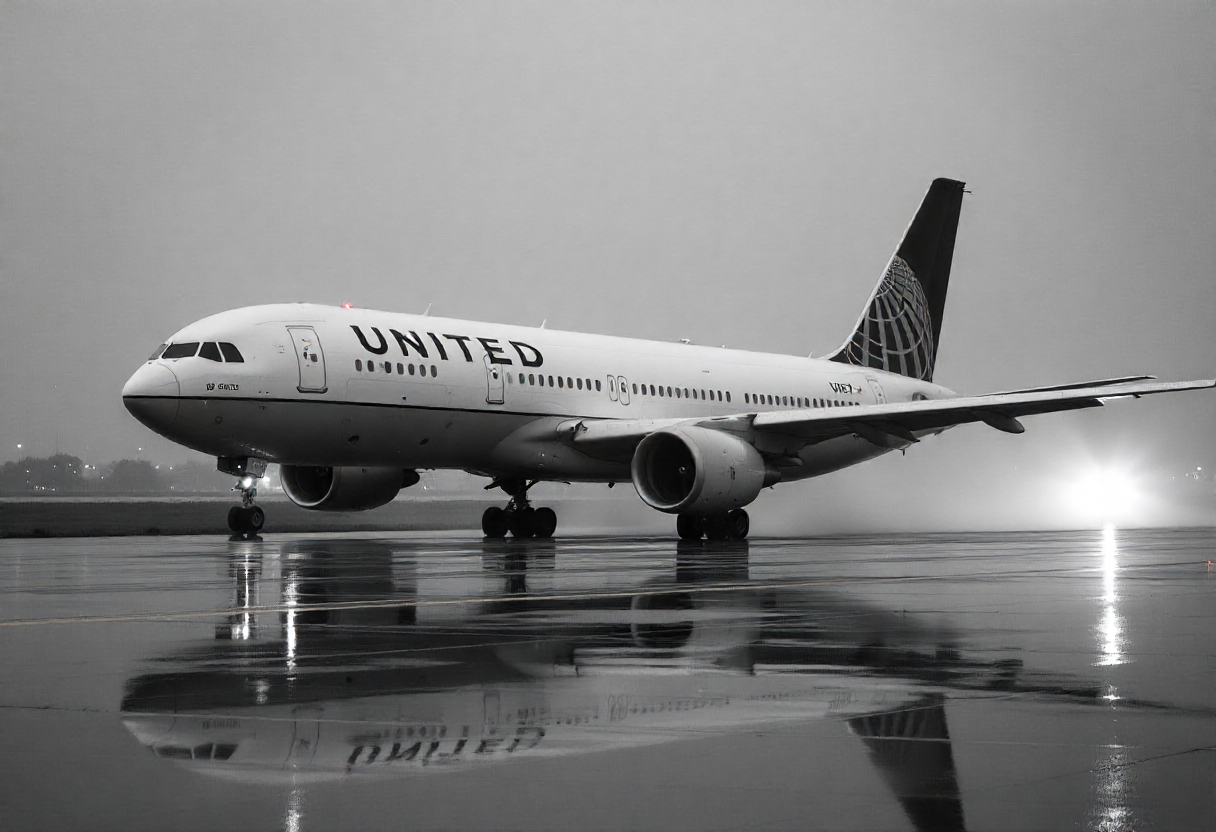What began as a routine transatlantic flight quickly escalated into a high-alert situation during the United Airlines Flight UA770 emergency diversion. On July 21, 2025, the Boeing 787-9 Dreamliner, operating from Barcelona (BCN) to Chicago O’Hare (ORD) with 257 passengers and 12 crew members, experienced a pressurization system anomaly mid-flight. This technical issue prompted the crew to declare a general emergency and initiate an immediate diversion to London Heathrow (LHR)—capturing the attention of global aviation authorities and sparking widespread public interest.
United airlines flight ua770 emergency
At approximately 37,000 feet above the Atlantic, the flight crew detected a cabin pressure irregularity—a rare but serious occurrence in modern aviation. Responding rapidly, they declared a general emergency by squawking 7700, a code recognized universally by air traffic controllers as an urgent distress signal. The aircraft then began a controlled descent and rerouted toward London.
Despite the seriousness of the event, there was no cabin decompression. Oxygen masks deployed briefly, but passengers remained calm, thanks in large part to the professionalism of the crew, who communicated clearly and maintained order.
The Diversion to London Heathrow
The aircraft landed safely at London Heathrow at 4:55 PM BST, utilizing Runway 27R. Emergency services were already on standby, ensuring a swift and secure arrival. Upon landing, there were no injuries reported. Passengers were assisted by United Airlines representatives and offered food, accommodations, and rebooking services as needed.
According to official reports, the aircraft’s systems functioned properly under emergency protocols, and the crew followed standard operating procedures with precision and efficiency.
Expert Analysis and Industry Response
Aviation analysts point out that cabin pressurization issues, while rare, are taken extremely seriously due to the potential risks of hypoxia or structural integrity failures. In this case, the system performed exactly as designed—prompting an alert, deploying masks if needed, and ensuring the aircraft could descend to a safer altitude quickly.
Professionals also highlight the importance of pilot training. The Flight UA770 crew’s swift squawk of 7700 and rerouting decision demonstrated their deep preparedness. Heathrow’s infrastructure, including rescue teams, emergency medical support, and secure landing zones, made it an optimal choice for diversion.
Passenger Experience and Safety
Reports from passengers onboard UA770 suggest the situation was handled with remarkable composure. Many did not even realize the severity of the issue until the plane began its descent. Crew members reassured passengers and followed all protocols, including mask checks and updates from the cockpit.
One traveler told BizzBuzz News:
“I’ve flown for decades, and this was the first time I saw a diversion happen. But the cabin crew made sure everything felt controlled. There was no chaos.”
How Often Do These Diversions Happen?
Statistically, emergency diversions like this occur in about 1 in every 1,600 flights, often as a precaution rather than a result of failure. Boeing 787s are equipped with multiple redundancies, making it possible to detect, respond, and resolve pressure-related incidents without endangering passengers.
Response from United Airlines
United Airlines confirmed the pressurization anomaly and issued a formal statement:
“Flight UA770 was diverted to London Heathrow out of an abundance of caution due to a potential mechanical issue. Our flight crew followed standard procedures and the aircraft landed safely. We apologize to our customers for the inconvenience and are working to provide assistance.”
Regulatory Oversight and Maintenance Review
Following such incidents, the Federal Aviation Administration (FAA) and relevant European aviation bodies typically initiate reviews. While no major malfunction occurred, routine inspections and system diagnostics are expected on the aircraft before it’s cleared to return to service.
What Happens After an Emergency Diversion?
After an emergency landing:
- The aircraft undergoes full mechanical inspection.
- A post-incident report is created by the airline and, if needed, by safety regulators.
- Passengers may receive compensation or accommodation if delayed over specific timeframes.
- Pilots submit detailed reports for analysis and training refinement.
Frequently Asked Questions
What caused United Flight UA770 to divert?
A cabin pressurization anomaly triggered the emergency. Although no decompression occurred, standard safety protocols prompted the diversion.
What is a squawk 7700?
It’s a transponder code that signals a general emergency to air traffic control. It allows ATC to prioritize the aircraft for landing and dispatch emergency services.
Were passengers in danger?
No. The situation was controlled, and safety systems performed as designed. There were no injuries or panic onboard.
Why choose London Heathrow as the diversion airport?
Heathrow is a major hub with emergency services, medical staff, and the runway capacity to safely handle a wide-body aircraft like the Boeing 787.
Did the aircraft land safely?
Yes, the landing was smooth and without incident. All passengers and crew disembarked safely.
Will passengers be compensated?
United Airlines assisted with rebooking and accommodations. Individual compensation depends on regulations and passenger itineraries.
Conclusion
United airlines flight ua770 emergency diversion showcases the aviation industry’s resilience and dedication to safety. While the experience may have been alarming for some, the coordinated response—from pilots to emergency services to ground crews—ensured a safe, secure, and calm outcome. Incidents like this serve as strong reminders of the robust safety protocols embedded in modern air travel.
As investigations and inspections proceed, Flight UA770 will be remembered not for tragedy, but for professionalism and control in the face of unexpected adversity.
